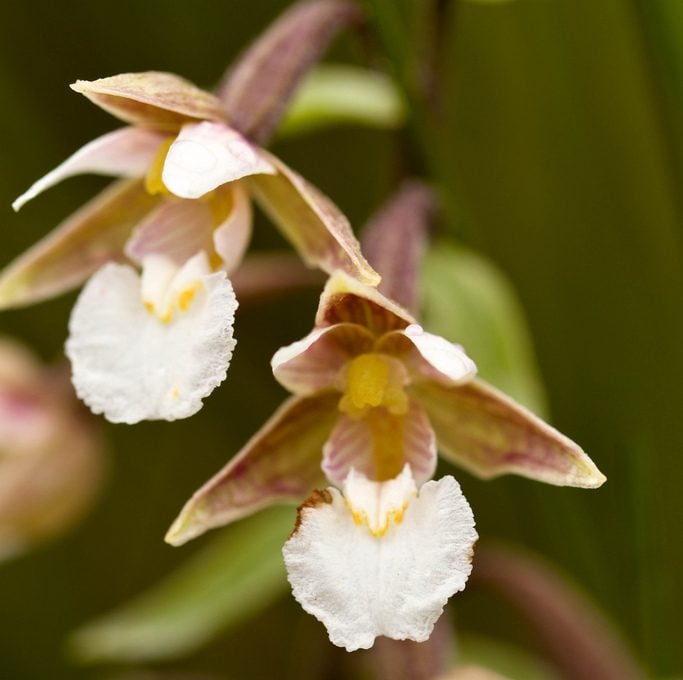Description
The Marsh Helleborine is probably one of our most stunning orchids, looking more like a diminutive Cymbidium orchid from tropical Asia than something you might find in Britain. The reddish stem grows up to about 50cm with broad, oval leaves at the base with increasingly narrowing leaves spirally arranged up the stem. The loose flower spike consist of up to 20 rather large flowers with white petals blotched with yellow and backed by pinkish-brown sepals. Flowering normally occurs from late June through to mid August.
Habitat Information
Marsh Helleborine is a plant of unshaded, damp ground on neutral to calcareous soils particularly favouring seasonally inundated areas where competition from other vegetation is reduced. Habitats include calcareous fens, damp pastures and meadows, and more skeletal habitats such as dune-slacks and disused gravel-pits.
Seed is central to the colonization of new ground but once established vegetative reproduction by long, horizontally-creeping rhizomes becomes more important and often leads to large stands of plants.
Growing Information
Sow in bare patches of damp, calcareous soil. We have grown it by sowing seed in late autumn on to soil used to fill and old bath tub and had flowers within 3 years. The plants spread by vegetative means but started to be out competed by more vigorous species. Opening up the site through mechanical disturbance or manipulating water levels may be required in order to halt succession and keep the plants long term. Orchids have dust like seed that can survive while dormant for up to 5 years or so in the soil, on germination the seedling forms a close association with soil fungi. This symbiotic relationship continues below ground for 2-3 years, and then also as the plant emerges, through to flowering.
Due to the very fine nature of the seed, our orchid seed is mixed with soil taken from the site where it was harvested.
Seed Content
The orchid seed offered here is sold as a mix of soil granules and seed. Each gram you purchase below is made up of 1 part seed to 99 parts soil granules by weight, and will contain an estimated 10,000 orchid seeds. Both the cost and seed numbers per gram reflect the number and value of seeds contained in each gram ordered.


